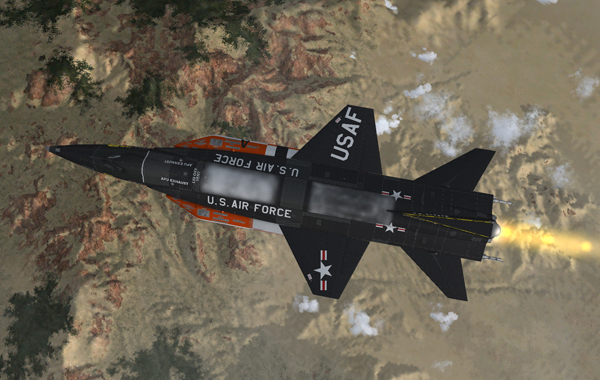
X-15A-2 SE, moments after launch.
The dropping of the real airplane from the carrier airplane is normally performed by the pilot of the carrier airplane. However, if this cannot be done, the captive airplane is equipped with an auxiliary launch switch to perform this function from a separate power source. A switch in the captive airplane controls an indicator light in the carrier airplane to indicate that the pilot of the captive airplane is ready for launch.
The ready-to-launch switch [52, fig. 5-1], on the main instrument panel, is moved to ON to light the "READY TO LAUNCH" indicator light in the carrier airplane when the captive airplane is ready to be dropped. There is no indicator light in the captive airplane. Moving the ready-to-launch switch to OFF turns out the indicator light. This circuit is powered by the carrier airplane's electrical system.
Note: Status of the ready-to-launch switch/light can be monitored on the system monitor panel.
The guarded, battery-bus-powered auxiliary launch switch [60, fig. 5-1], on the instrument panel left wing, uses primary DC bus power to operate the hydraulic launch system in the carrier airplane. Lifting the guard and moving the switch up (ON) supplies power directly to the solenoid valve in the normal launch hydraulic system.
Note: Moving this switch has no effect in the current software version.